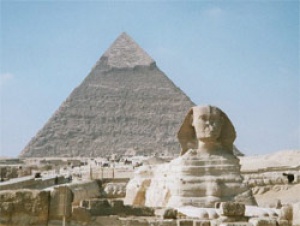Giza’s cave underworld finally revealed

Debate on the discovery of a cave
complex under the Giza plateau and Pyramids has escalated with the
simultaneous publication of a new book and the first public showing of
hundreds of photos and supporting evidence in front of a capacity audience
at a major conference in Virginia Beach.
History writer Andrew Collins, who discovered the caves in 2008, presented
his findings for the first time and showed that Egypt’s official denial
of the caves’ existence is based on the misconception that the tomb
giving access to the cave system had already been fully explored.
Collins’s new book “Beneath the Pyramids”, published this week, records
how he and Egyptological researcher Nigel Skinner Simpson used the
200-year-old memoirs of British diplomat and explorer Henry Salt to track
down the entrance to the cave underworld.
Egyptologists never found the caves themselves because they were unaware of
the significance of Salt’s memoirs, which had languished in the British
Museum for over 150 years before their publication in 2007.
According to Collins the cave system is many hundreds of yards long and
might well have been detected from space using state of the art satellite
radar imagery.
ADVERTISEMENT
Despite overwhelming hard evidence to support his claims, Collins’ cave
discovery was disputed in a recent internet blog by Dr Zahi Hawass,
Secretary General of Egypt’s Supreme Council of Antiquities.
Dr Hawass suggested that Collins confused a known tomb with a cave system,
stating: “Anyone who enters this tomb may feel they are in a maze
corridor because of the multiple tunnels, and it seems more than its 35
meters long.”
Collins shows that while the tomb itself is only 100 feet or so long (i.e.
35 meters as Hawass related) what Hawass didn’t realize is that a natural
cave system extends for many hundreds of yards into the bedrock, and is
entered through an obscure opening located in the far reaches of the tomb.
Details about the caves’ exploration and the necessity for specialized
safety and breathing equipment are contained in Collins’ new book
“Beneath the Pyramids” (4th Dimension Press, 2009).
At Collins’ presentation in Virginia Beach it was revealed for the first
time that the cave system may lead to the fabled tomb of Hermes, which
legend asserts lies beneath the plateau’s Second Pyramid. Hermes – a
mythical founder of Egyptian civilization – is believed to lay in a cave
vault holding the so-called Emerald Tablet, on which are written the
secrets of creation.

